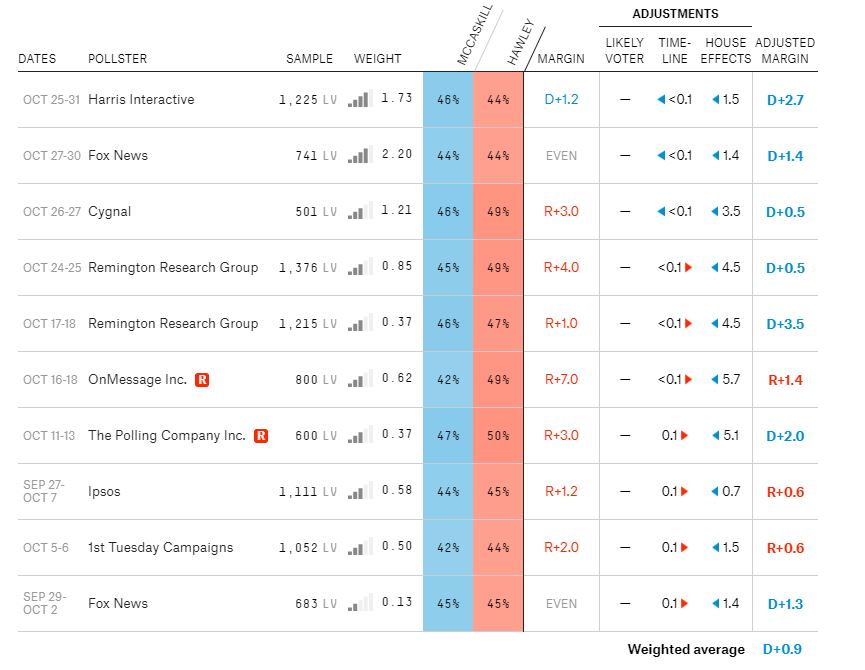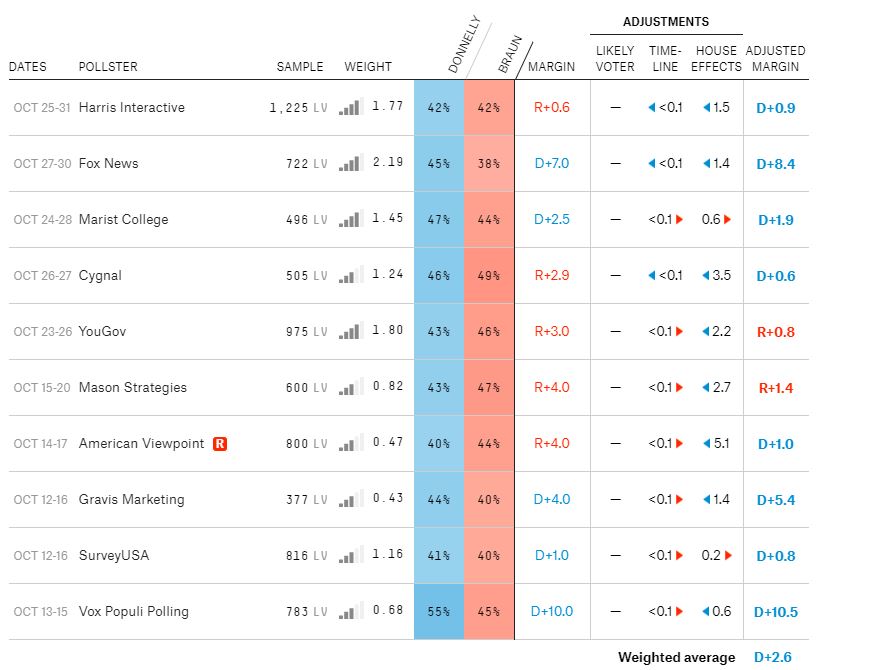Recently, I claimed that fivethirtyeight.com is too cautious when correcting polls for house effects. Multiplying their correction by 4/3 gives lower volatility of generic congressional ballot polls (and for the past 100 days multiplying by 3/2 works even better). I think the are conservative, because adjusting or correcting polls is bound to be controversal and so they impose a pseudo prior that all pollsters are unbiased. In any case, I would like to play with the numbers. I am going to very crudely adjust their adjustments by multiplying by 4/3. The adjustment is very important when attempting to forecast two red state Senatorial elections in Missouri and Indiana, because they have been polled almost exclusively by pollsters with strong Republican
Topics:
Robert Waldmann considers the following as important: politics
This could be interesting, too:
Robert Skidelsky writes Lord Skidelsky to ask His Majesty’s Government what is their policy with regard to the Ukraine war following the new policy of the government of the United States of America.
Joel Eissenberg writes No Invading Allies Act
Ken Melvin writes A Developed Taste
Bill Haskell writes The North American Automobile Industry Waits for Trump and the Gov. to Act
Recently, I claimed that fivethirtyeight.com is too cautious when correcting polls for house effects. Multiplying their correction by 4/3 gives lower volatility of generic congressional ballot polls (and for the past 100 days multiplying by 3/2 works even better). I think the are conservative, because adjusting or correcting polls is bound to be controversal and so they impose a pseudo prior that all pollsters are unbiased. In any case, I would like to play with the numbers.
I am going to very crudely adjust their adjustments by multiplying by 4/3. The adjustment is very important when attempting to forecast two red state Senatorial elections in Missouri and Indiana, because they have been polled almost exclusively by pollsters with strong Republican house effects. This means that the fivethirtyeight correction actually flips the lead — the fivethirtyeight corrected polls give a polls only “light” estimate that the Democrat McCaskill is ahead by 0.9% while the simpler average with no adjustment at realclearpolitics shows the Republican Hawley ahead by 2%. That’s not a huge difference.
Looking at the 10 most recent polls I see an average adjusment of 2.98 %. This means my adjustment to the adjustment gives McCaskill an additional 0.99% slightly more than doubling her estimated lead. Interestingly, the adjusted adjusted polls only estimate of 1.89% is almost exactly equal to the fivethirtyeight “classic” estimate of 1.7% which is based on polls and “fundamentals” including fund raising and incumbency.
Up in Indiana, fivethirtyeight gives Joe Donnelly a adjusted polls only estimated lead of 2.6%. the average adjustment of the most recent 10 polls is 1.76% so my adjustment to the adjustment gives him an additional 0.58% and a lead of 3.18%. The classic estimate with fundamentals gives him a lead of 3.2%.
In both cases, the adjusted adjustment makes the light estimate strikingly similar to the fivethirtyeight classic estimate.
With adjusted adjusted polls and fundamentals I get a not so classic estimate of a 2.7% lead for McCaskill and 3.8% for Donnelly.
Very crudely this seems to imply a roughly 70% estimated probability that McCaskill will be re-elected (I just read the probability corresponding to Donnelly’s light 538 adjusted 2.6 %).


